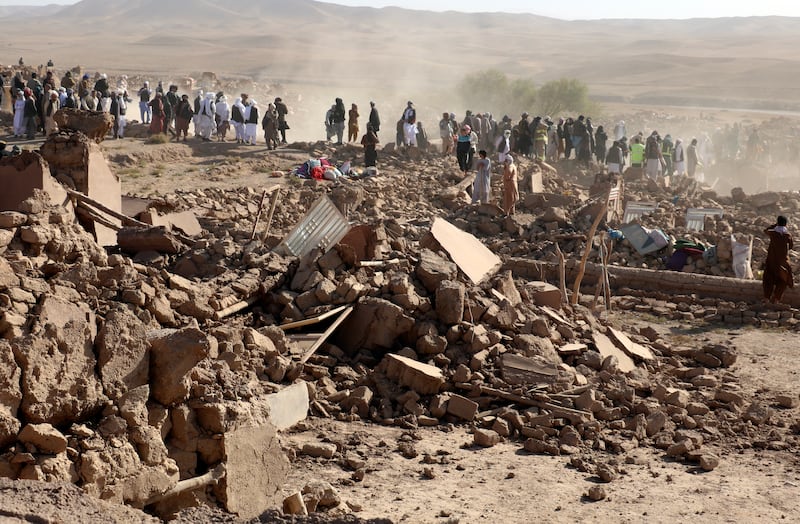At least 2,000 people have died after powerful earthquakes struck western Afghanistan, a Taliban government spokesman has said.
The figures could not be independently verified but, if correct, the toll would eclipse that of an earthquake that hit eastern Afghanistan in June 2022, striking a rugged, mountainous region, flattening stone and mud-brick homes and killing at least 1,000 people.
Saturday’s magnitude 6.3 earthquake hit a far more densely populated area, near Afghanistan’s fourth largest city, Herat. It was followed by strong aftershocks.
The United States Geological Survey said the earthquake’s epicentre was about 35km northwest of Herat city.
Turkey’s Erdogan makes risky bet on peace with Kurds
‘We’ll rest when we win’: No let-up for Ukraine’s medics and rescue teams as war with Russia grinds on
Trump-Starmer summit: British PM produces masterstroke of political theatre as he seeks to cement bromance
The sap rises and barriers go up as China prepares for the year’s biggest political event
It was followed by three strong aftershocks, measuring magnitude 6.3, 5.9 and 5.5, as well as lesser shocks.
On Sunday, people attempted to dig out the dead and injured with their hands in Herat, clambering over rocks and debris.
Survivors and victims were trapped under buildings that had crumbled to the ground.
Abdul Wahid Rayan, a spokesman at the ministry of information and culture, said the death toll is higher than originally reported.
Villages have been destroyed and hundreds of civilians are buried under the debris, he said, while calling for urgent help.
“Besides the 2,060 dead, 1,240 people are injured and 1,320 houses are completely destroyed,” said Mr Rayan.
At least a dozen teams have been scrambled to help with rescue efforts, including from the military and non-profit organisations such as the Red Crescent.

The United Nations migration agency deployed four ambulances with doctors and psychosocial support counsellors to the regional hospital.
At least three mobile health teams were on their way to the Zenda Jan district, which is one of the worst affected areas.
Medecins Sans Frontieres set up five medical tents at Herat regional hospital to accommodate up to 80 patients. Authorities have treated more than 300 patients, said the agency.
Irfanullah Sharafzai, a spokesman for the Afghan Red Crescent Society, said seven teams are busy with rescue efforts while other teams are arriving from eight nearby provinces.
“A temporary camp has been set up for people who have lost their houses and need shelter for now,” Mr Sharafzai told the Associated Press.
“Whatever is in our capacity we will do for our poor and needy people at this difficult time.”
Neighbouring Pakistan offered help. “We are in contact with the Afghan authorities to get a first-hand assessment of the urgent needs of those affected by the earthquake,” said the foreign affairs ministry.
“Pakistan will extend all possible support to the recovery effort.”
China’s ambassador to Afghanistan Zhao Xing said his government and the country’s charitable institutions were ready to provide all kinds of help.
There are a total of 202 public health facilities in Herat province, one of which is the large regional hospital where 500 casualties had been taken, the World Health Organisation (WHO) said in a report on Sunday.
A vast majority of the facilities are smaller basic health centres and logistical challenges were hindering operations, particularly in remote areas, the WHO said.
“While search and rescue operations remain ongoing, casualties in these areas have not yet been fully identified,” it said.













